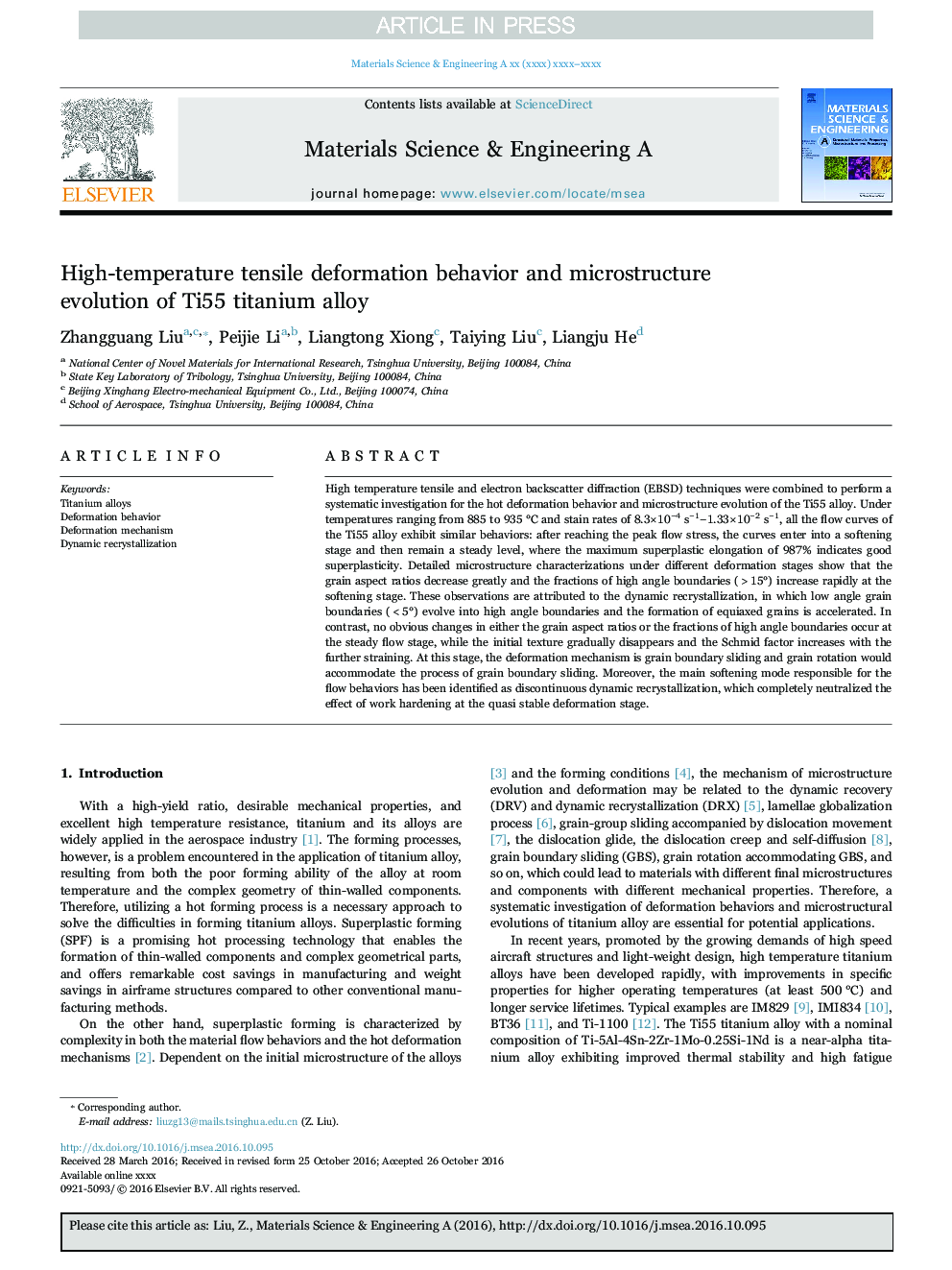| Article ID | Journal | Published Year | Pages | File Type |
|---|---|---|---|---|
| 5456767 | Materials Science and Engineering: A | 2017 | 11 Pages |
Abstract
High temperature tensile and electron backscatter diffraction (EBSD) techniques were combined to perform a systematic investigation for the hot deformation behavior and microstructure evolution of the Ti55 alloy. Under temperatures ranging from 885 to 935 °C and stain rates of 8.3Ã10â4 sâ1â1.33Ã10â2 sâ1, all the flow curves of the Ti55 alloy exhibit similar behaviors: after reaching the peak flow stress, the curves enter into a softening stage and then remain a steady level, where the maximum superplastic elongation of 987% indicates good superplasticity. Detailed microstructure characterizations under different deformation stages show that the grain aspect ratios decrease greatly and the fractions of high angle boundaries (>15°) increase rapidly at the softening stage. These observations are attributed to the dynamic recrystallization, in which low angle grain boundaries (<5°) evolve into high angle boundaries and the formation of equiaxed grains is accelerated. In contrast, no obvious changes in either the grain aspect ratios or the fractions of high angle boundaries occur at the steady flow stage, while the initial texture gradually disappears and the Schmid factor increases with the further straining. At this stage, the deformation mechanism is grain boundary sliding and grain rotation would accommodate the process of grain boundary sliding. Moreover, the main softening mode responsible for the flow behaviors has been identified as discontinuous dynamic recrystallization, which completely neutralized the effect of work hardening at the quasi stable deformation stage.
Related Topics
Physical Sciences and Engineering
Materials Science
Materials Science (General)
Authors
Zhangguang Liu, Peijie Li, Liangtong Xiong, Taiying Liu, Liangju He,
